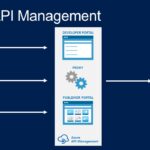By 2027, the global edge computing market is estimated to acquire a revenue of $43.4 billion with a substantial growth rate of 37.4%. Hence, this shows the rising demand and adaptation of this modern technology.
Edge computing is a modern-day technology that works upon distributed information technology architecture. In this technology, the data is processed as close as possible to its source.
Data is the powerhouse of all businesses to give them real-time control and business insight for carrying out efficient operations. Let’s look at how edge computing will help industry professionals acquire crucial data.
Functions of Edge Computing
Information technology (IT) landscape brings in many new possibilities and perspectives over the course of time. With its use, the business applications will eventually come closer to edge servers and IoT devices for collecting data.
The data proximity at the origin will help businesses get faster insights and optimal responses. The bandwidth availability will be higher for businesses to create and process the enterprise data.
This technology brings together the servers and storage where crucial data lies. It is more like decentralizing the core processing potential of all networks. As a result, the data won’t have to travel across all of the storage networks, which reduces backhaul traffic. Hence, data processing is paced up!
To help you better understand this technology, here are a few evident functions of edge computing:
- Data Privacy- Businesses that deal with high data volumes are prone to cyber attacks. Edge Computing helps address most of their data security concerns by achieving low latency and higher data bandwidth.
- AR Capabilities– Data is mostly stored over the cloud to make it accessible for VR and AR devices. But, with usual measures, the data retrieval might get interrupted, and the experience will get hampered. Hence, this concern is addressed by edge computing.
- IoT Edge Computing- Edge computing allows businesses to easily gather data from IoT devices and process it at the edge. With this, there is no need to send the data back to the cloud or its data center for processing, as it can be done at the source itself.
- Data Sovereignty- Edge computing allows businesses to prevail over the data sovereignty laws upon its storage, processing, and exposure. Hence, this allows the raw data to get locally processed and secure the sensitive data before sending it to the data center or cloud.
Working Process of Edge Computing
Edge computing relies upon computing devices, sensors, and machinery for collecting and feeding data to the cloud or edge servers.
Depending upon the task, the data will then be fed to the machine learning or analytic system. Hence, this will help businesses deliver automation capabilities. With edge computing, there will be better visibility into the current state of the particular product, system, or device.
Edge data centers work on processing the data, but it is not the only way. The IoT devices are also capable of processing the data and sending it to mobile phones, storage devices, or edge servers for handling the calculations.
Thrre are various technologies that collectively work to form an edge network. And that includes mobile edge computing, fog computing, and cloud computing. The sensors and the IoT-edge devices track the traffic patterns and offer real-time insights into routing and congestion.
Benefits of Edge Computing
Various industries are adopting edge computing technology to fruitfully utilize the data for better business opportunities.To help you get a better insight into the potential of edge computing, here are a few benefits of it:
- Edge computing has the potential to deliver faster response times.
- It offers better bandwidth to avoid unnecessary processing aspects.
- Data management is improved when gathered over the network edge.
- The distributed nature of edge computing networks is what makes data highly secure from being exploited.
Industries Where Edge Computing is Used
The industries where edge computing solutions are highly preferred and utilized include:
- Autonomous and electric vehicles
- Vehicle charging stations
- Retail applications
- Industrial process monitoring
- Predictive maintenance sector
- Agriculture sector
- Security and worker safety sector
- Traffic management system
- Public transport system
Parting Words
Earlier in 2018, the enterprise data was less important and was not leveraged to the maximum potential. But in the past couple of years, the demand for it has increased.
To make edge computing successful, one needs to choose durable devices that can reliably function for a longer time, even in harsh environments. Moreover, assembling the software and hardware is essential to get started with this solution.
Get complete knowledge of edge computing technology before you can successfully start with it.









